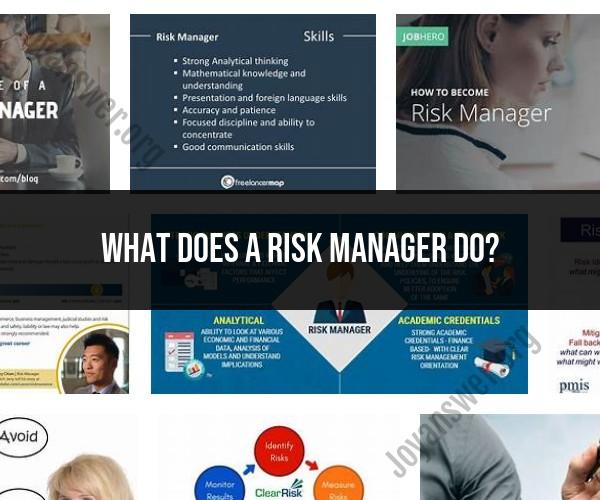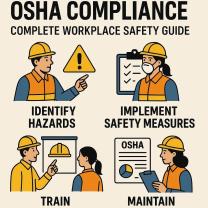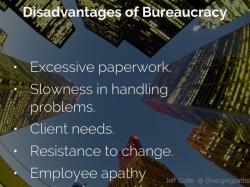What does a risk manager do?
A Risk Manager plays a critical role in an organization by identifying, assessing, and mitigating risks that could impact the organization's financial stability, reputation, or operations. The responsibilities and duties of a risk manager may vary depending on the industry and organization, but their core role involves managing risk to protect the organization's interests. Here are the key functions and responsibilities of a risk manager:
Risk Identification: Risk managers identify potential risks and hazards that could affect the organization. This involves assessing internal and external factors, such as market conditions, regulatory changes, economic trends, and operational processes.
Risk Assessment: They evaluate the likelihood and potential impact of identified risks to determine their significance. This assessment helps prioritize risks based on their severity and potential consequences.
Risk Mitigation and Control: Risk managers develop and implement strategies to mitigate and control risks. This may involve creating risk management policies, procedures, and protocols to minimize the impact of adverse events.
Insurance Management: They oversee the organization's insurance programs, including property and casualty insurance, liability coverage, and other types of insurance policies. They assess the adequacy of coverage and negotiate insurance contracts.
Compliance and Regulation: Risk managers ensure that the organization complies with relevant laws, regulations, and industry standards. They stay informed about changes in regulations and help the organization adapt to new requirements.
Financial Risk Management: They manage financial risks, including market risk, credit risk, and liquidity risk. This involves strategies to hedge against adverse financial movements and ensure the organization's financial stability.
Operational Risk Management: They assess and manage operational risks related to internal processes, systems, and procedures. This includes identifying vulnerabilities and implementing controls to prevent operational disruptions.
Strategic Risk Management: Risk managers assist in identifying and evaluating strategic risks that could impact the organization's long-term goals and objectives. They work with senior management to develop strategies for risk mitigation.
Crisis Management and Response: In the event of a crisis or unexpected event, they play a key role in developing and implementing response plans to minimize damage and ensure business continuity.
Risk Reporting: They provide regular reports and updates to senior management and stakeholders regarding the organization's risk profile, including risk exposure and mitigation efforts.
Vendor and Supply Chain Risk: They assess risks associated with third-party vendors and supply chains and develop strategies to manage these risks effectively.
Environmental and Sustainability Risk: In some organizations, risk managers may also address environmental and sustainability risks, ensuring compliance with environmental regulations and promoting sustainable practices.
Employee Training: They may conduct training and awareness programs for employees to enhance risk awareness and promote a culture of risk management.
Data Security and Cyber Risk Management: In the digital age, risk managers are increasingly involved in managing cybersecurity risks and protecting sensitive data from breaches.
The primary goal of a risk manager is to help the organization proactively manage and mitigate risks to minimize financial losses, protect the organization's reputation, and ensure compliance with legal and regulatory requirements. They play a crucial role in safeguarding the organization's assets and long-term viability.













